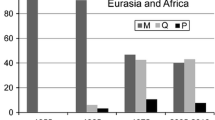Abstract
The hobo transposon is responsible for one of the three hybrid dysgenic systems that have been described in Drosophila melanogaster. Most studies on the hobo dysgenic system have been carried out using the PM system as a reference. However, these two systems differ significantly. In particular, several studies have failed to find any correlation between the molecular structures of hobo elements, the instability of the transposon and the incidence of gonadal dysgenic (GD) sterility. On the other hand, no study of the ability of females to permit hobo activity in their progeny when they are crossed with males harboring active hobo elements (permissivity) has yet been reported. In order to investigate the parameters involved in hobo permissivity, four E strains were studied with regard to the molecular nature of their hobo sequences and the GD sterility induced by a controlled source of hobo transposase. We show that hobo permissivity varies both within and between E strains. Moreover, permissivity decreases with age in E females. Our results are discussed with respect to similar phenomena that have been described in relation to the reactivity of the IR dysgenic system.
Similar content being viewed by others
Author information
Authors and Affiliations
Additional information
Received: 17 August 1998 / Accepted: 17 December 1998
Rights and permissions
About this article
Cite this article
Bazin, C., Denis, B., Capy, P. et al. Characterization of permissivity for hobo-mediated gonadal dysgenesis in Drosophila melanogaster . Mol Gen Genet 261, 480–486 (1999). https://doi.org/10.1007/s004380050991
Issue Date:
DOI: https://doi.org/10.1007/s004380050991




